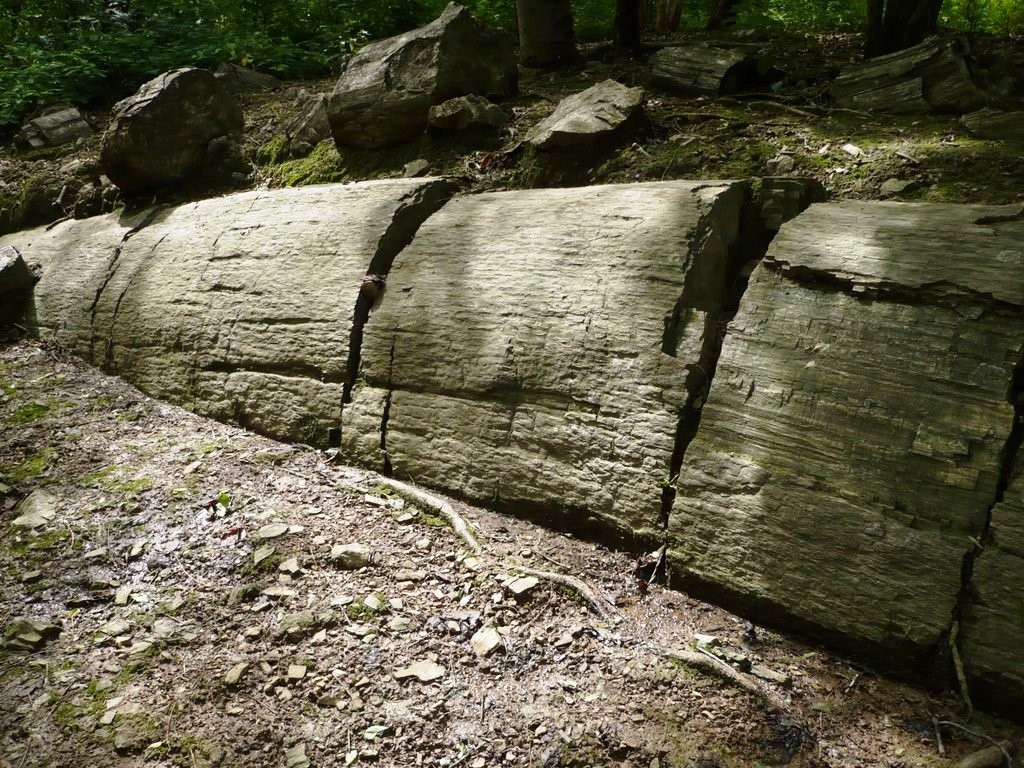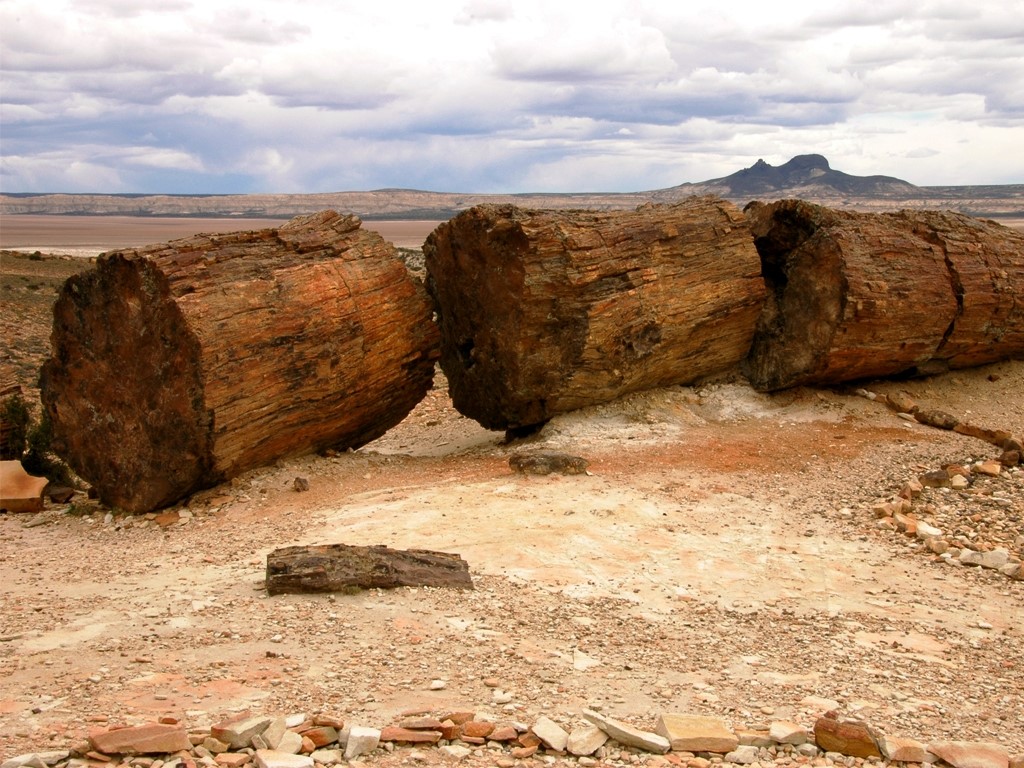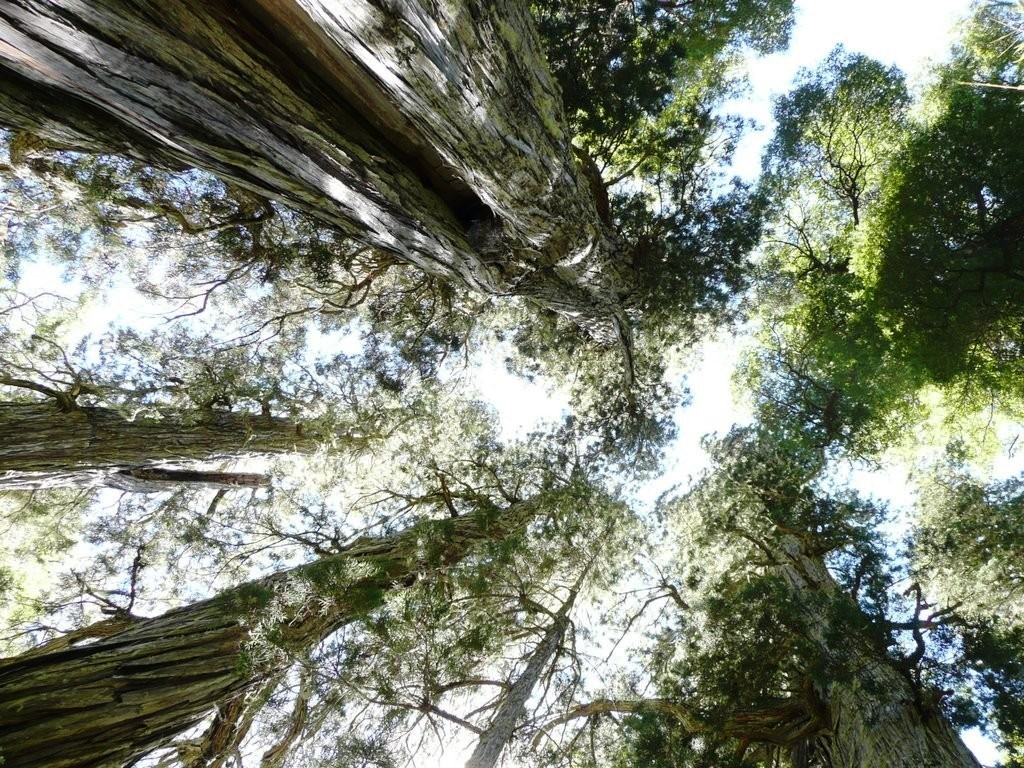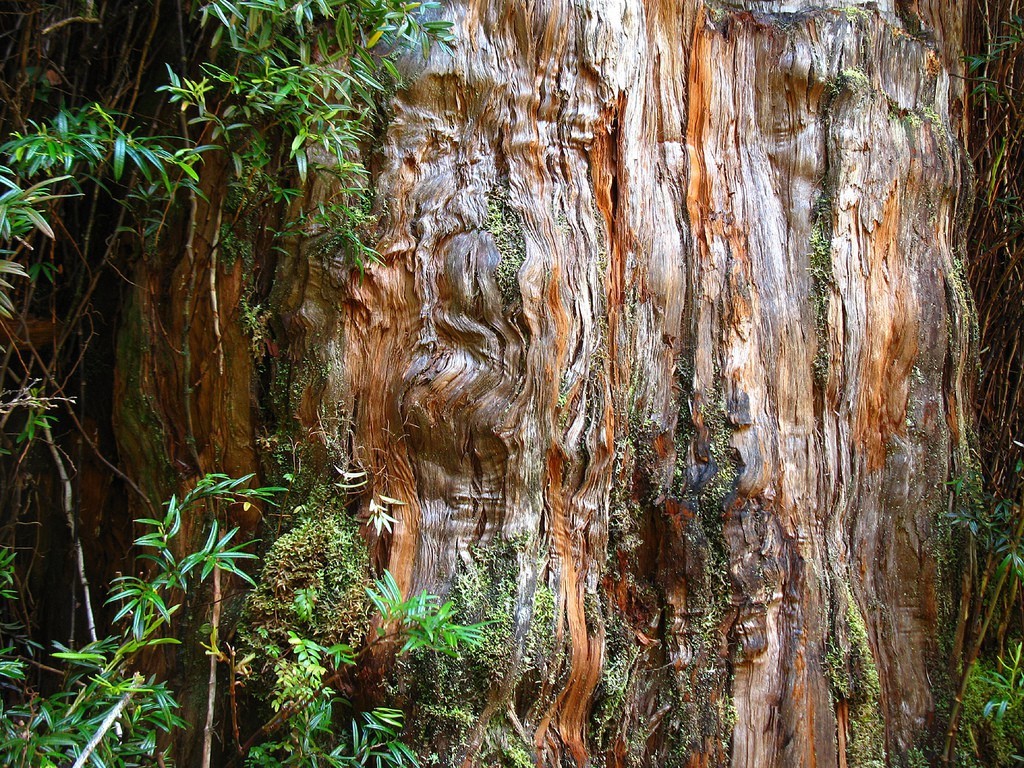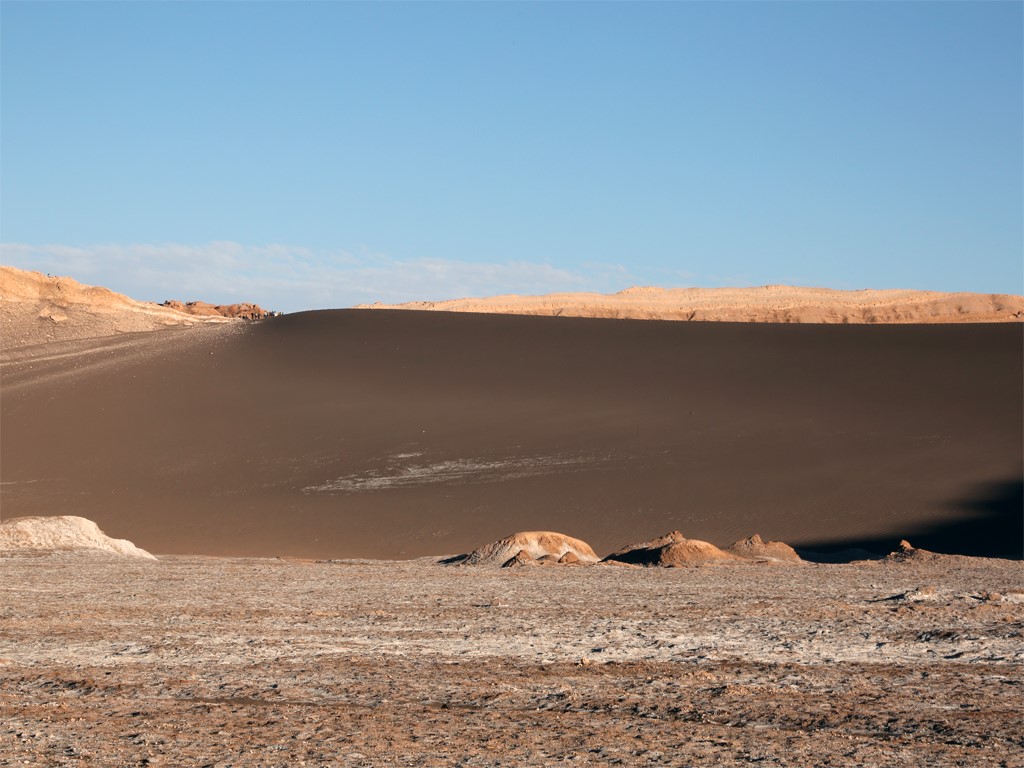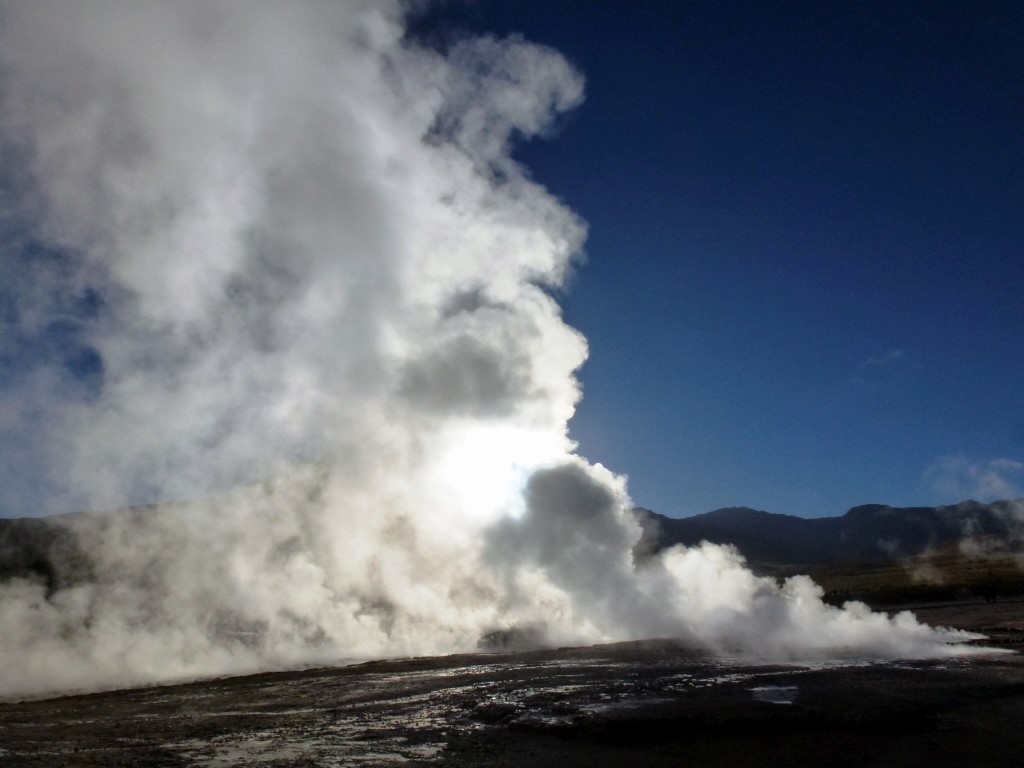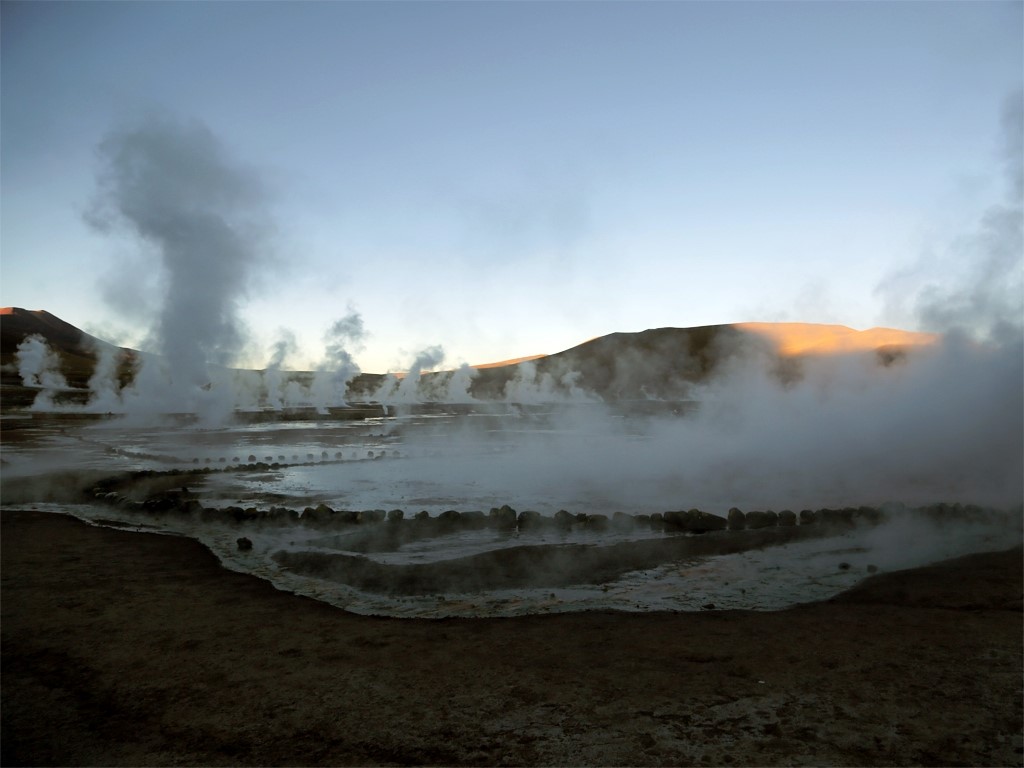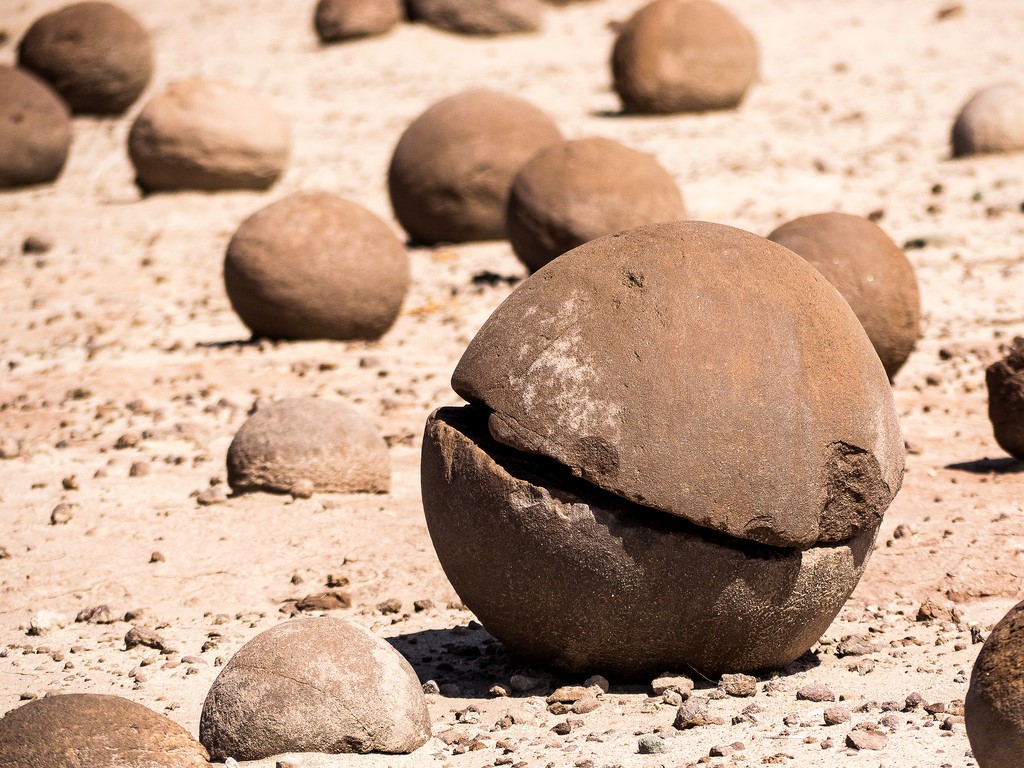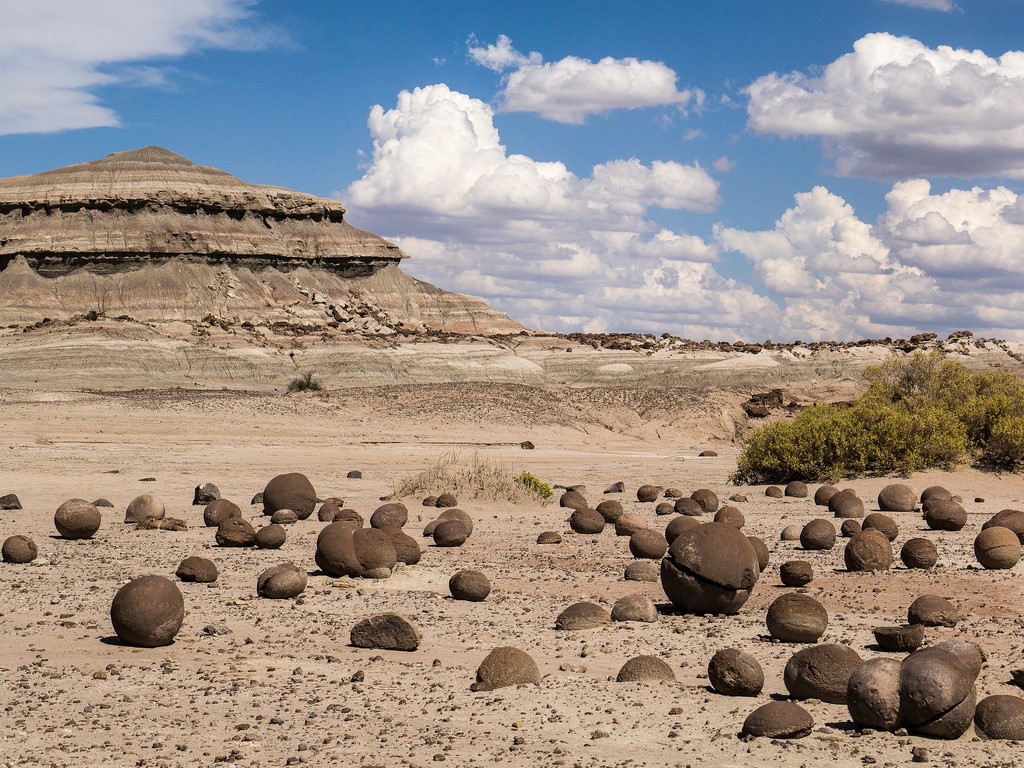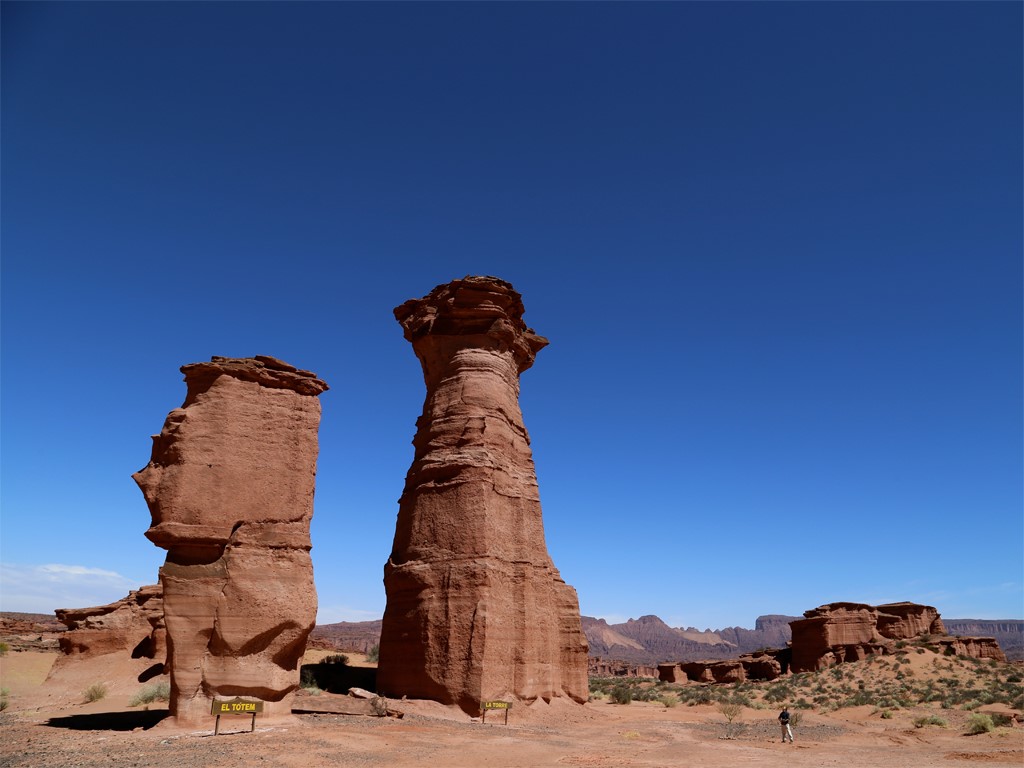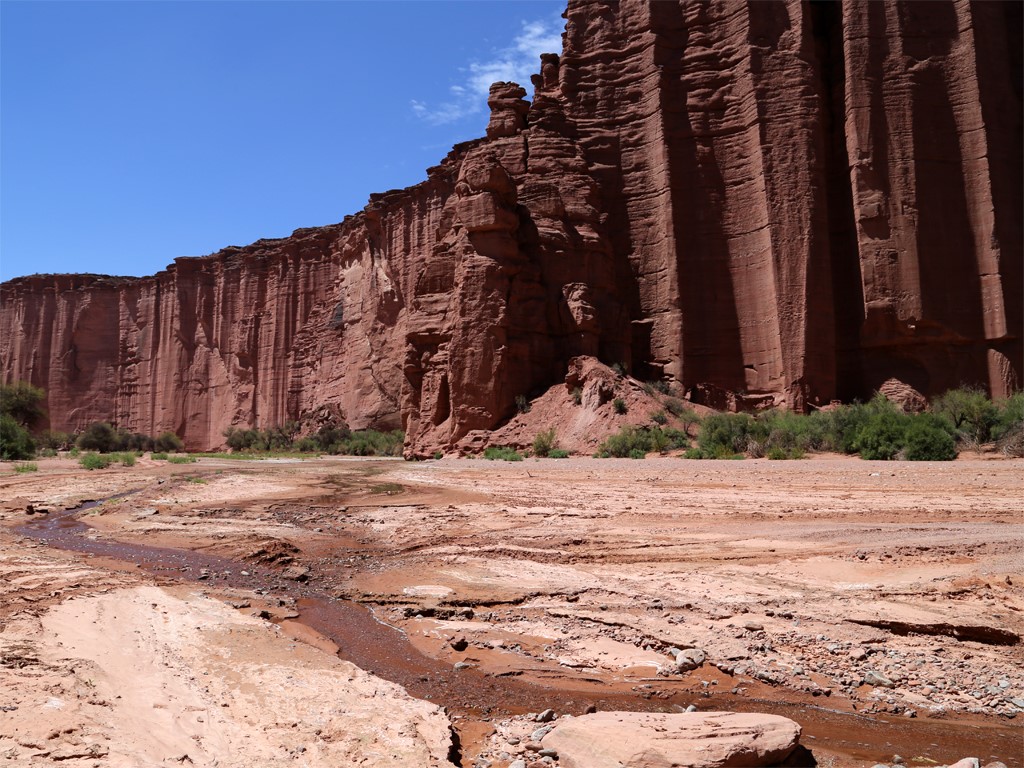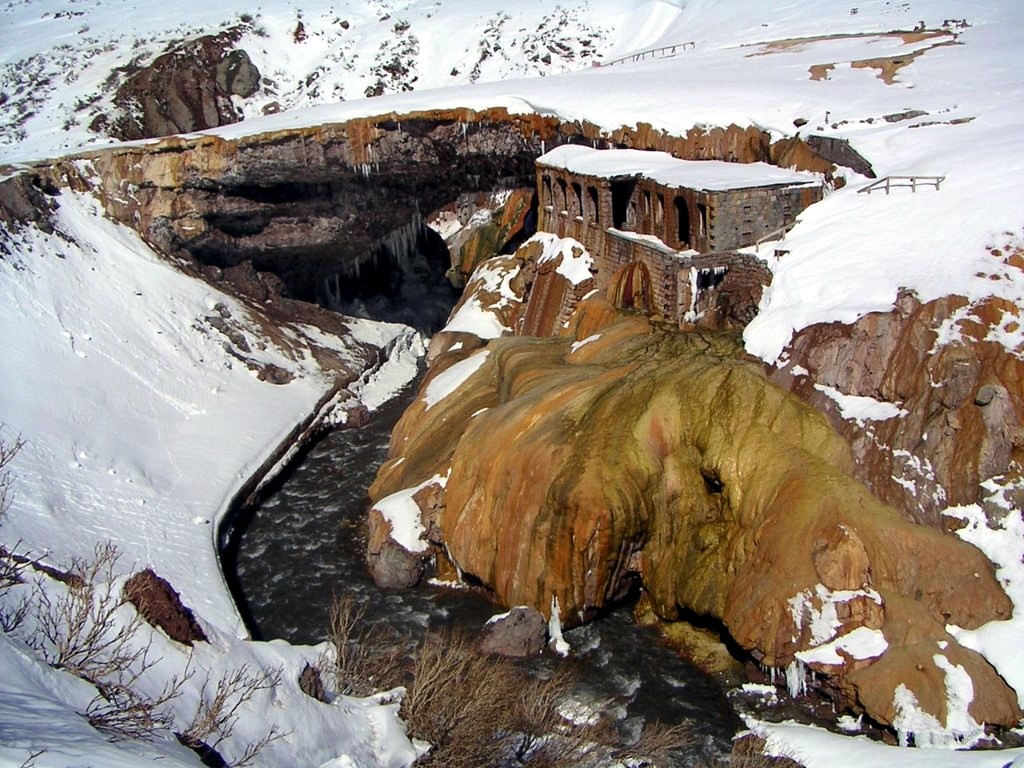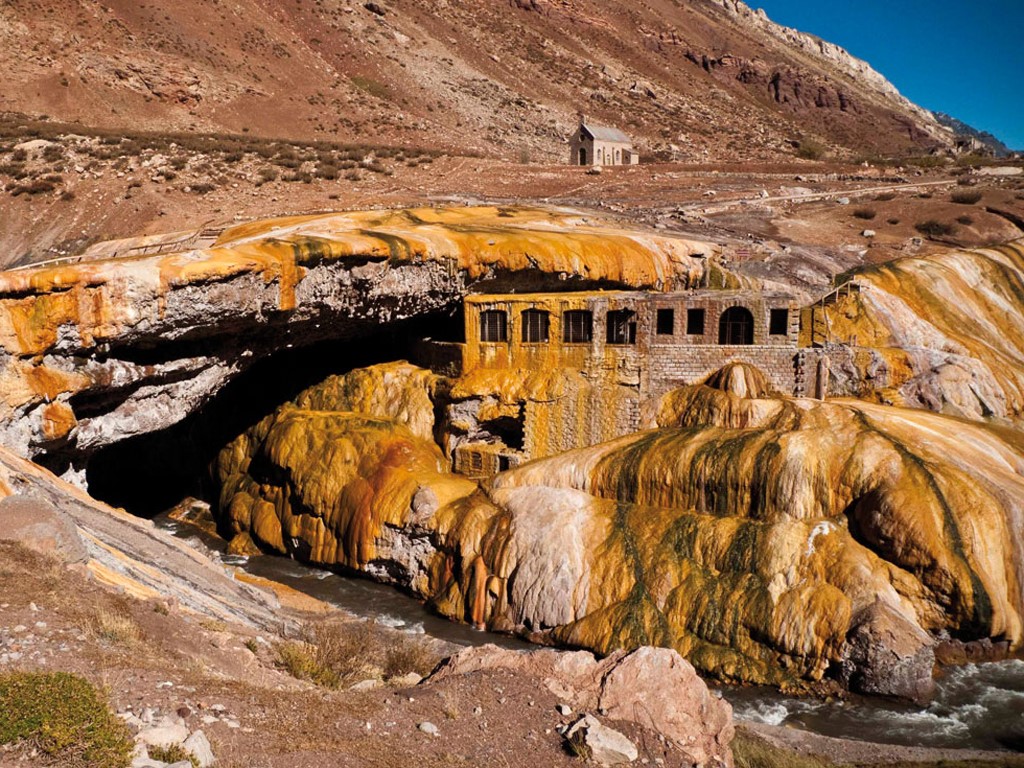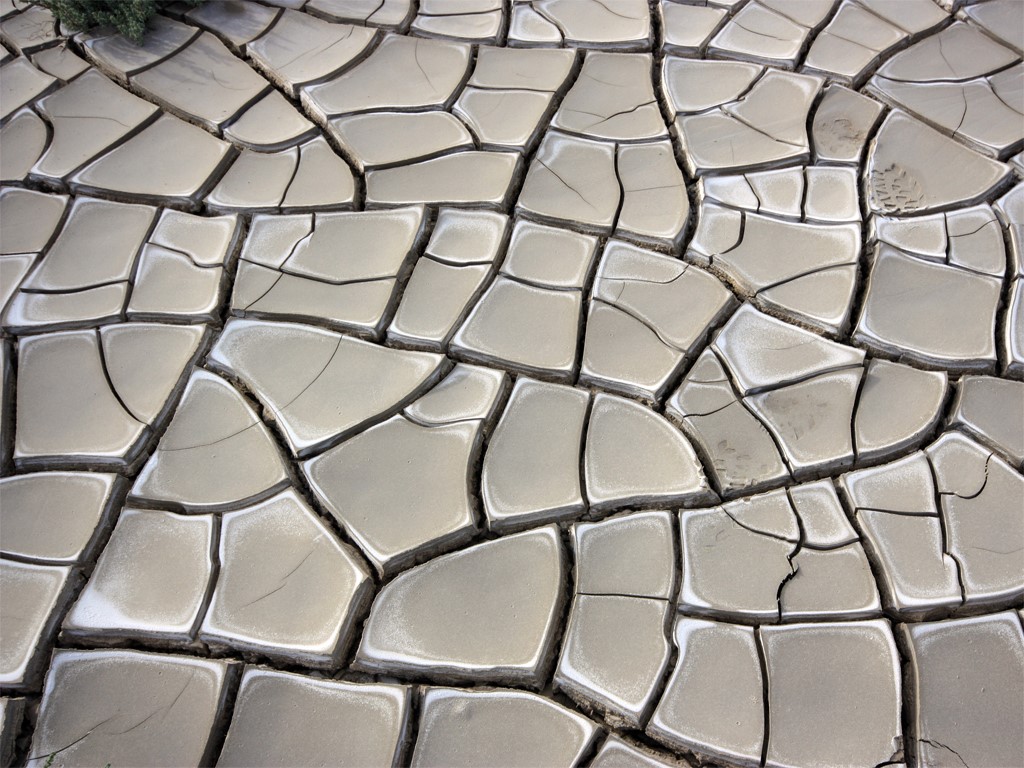For fans of fossils and old stones, I offer tailor-made geological tours where you’ll be amazed by the work of erosion, the geology, the minerals on earth.
There you’ll discover fossils and traces of the past, which many sites in Argentina and Chile offer: thousand-year-old trees fossilized by time in Patagonia, the oldest dinosaur bones ever found in the Cuyo region, millions of years of glaciation, an exceptional vestige of geological times… There will be no shortage of surprises. Here’s some general information as an example.
Petrified forests of Argentine Patagonia
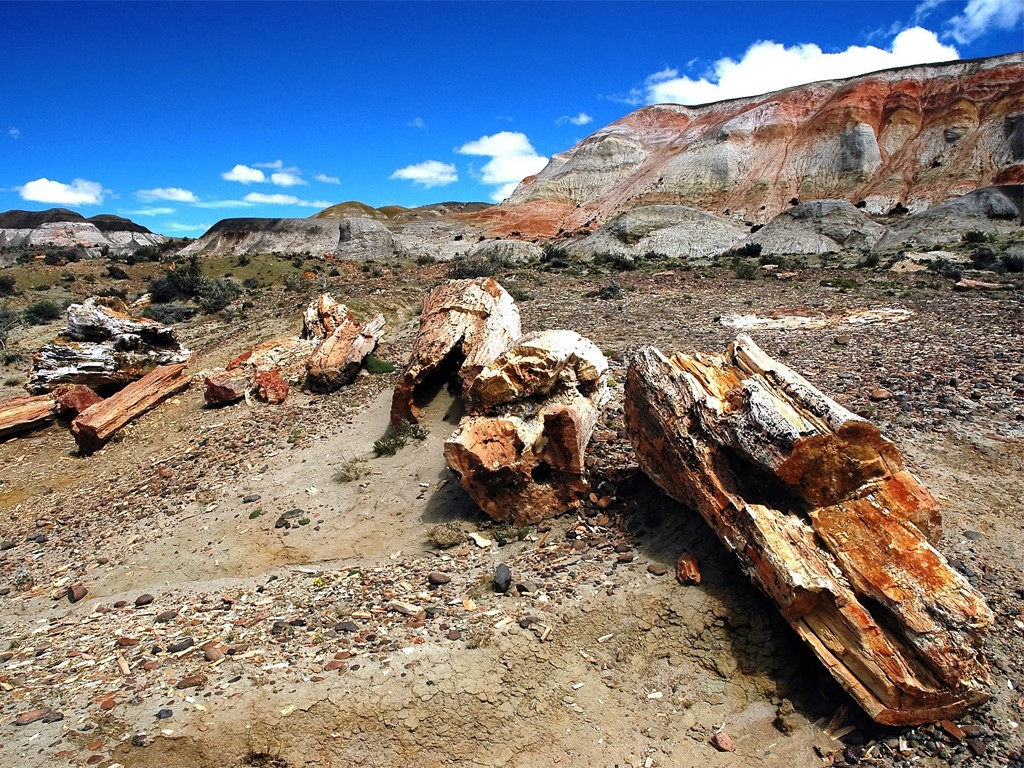
Bosques Petrificados of Jaramillo National Park
Intense volcanic activity reduced the region’s vast forests to ashes some 150 million years ago. Subsequently, erosion revealed mineralized ancestors of the araucaria, a tree found only in the southern hemisphere, measuring up to 3 m in diameter and 35 m high!
Sea currents also contributed in moving some tree fossils until here from mountainous regions… It’s truly a stunning spectacle and at the “Bosques Petrificados de Jaramillo” National Park (Petrified Forests of Jaramillo), as is often the case in Patagonia, there are very few tourists.
I invite you to come and discover this breathtaking place that is the Jaramillo National Park, which is located in the province of Santa Cruz in Patagonia Argentina.
Visit to Los Alerces National Park
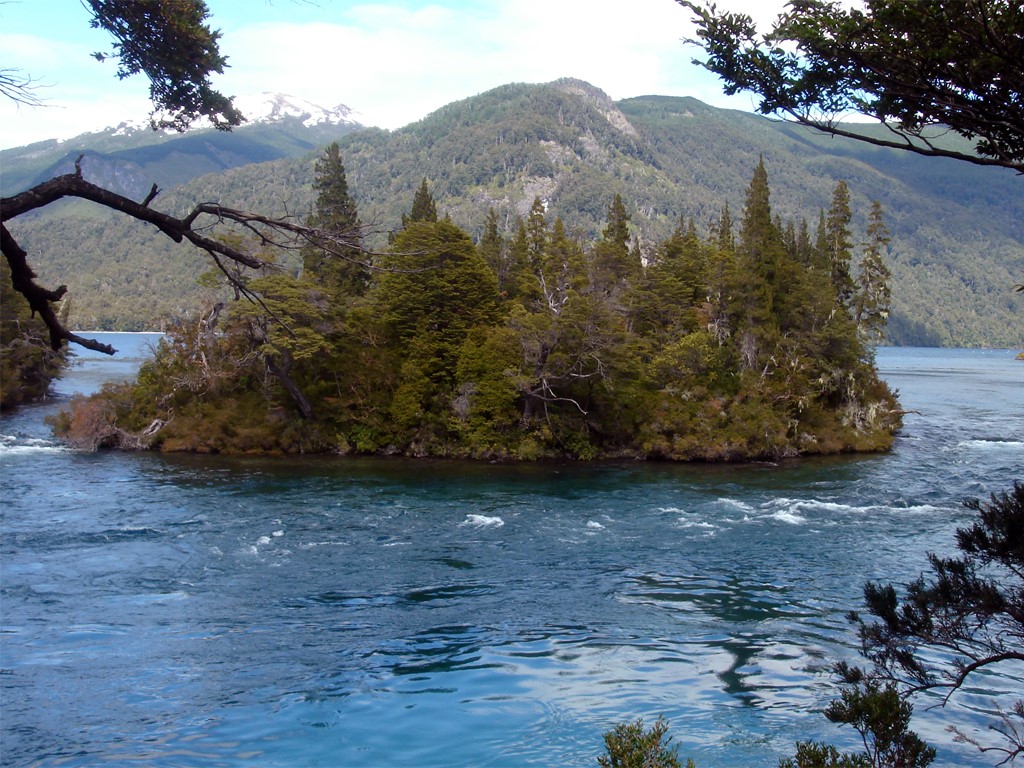
“Los Alerces” National Park
Los Alerces National Park (“Parque Nacional Los Alerces”) is located in the province of Chubut, in Argentine Patagonia. It includes the Futalaufquen Lake, Río Arrayanes, Verde and Menéndez Lakes. The park was founded in 1937 and its area is 263,000 hectares, which represents 2,630 km²!
The purpose of its creation was the protection of the superb Fitzroya Cupressoides, also called Lahuán or Alerce, one of the longest-lived trees on earth which was threatened with extinction. In this park, there are some that are 4,000 years old, measuring 70 m high!!!
In these places, the climate is cold temperate with very contrasting seasons. Winters are rainy, even snowy; summers are dry, with cool nights… About 300 km south of Bariloche, it’s an absolute must-visit!
Exploring the Atacama Valleys
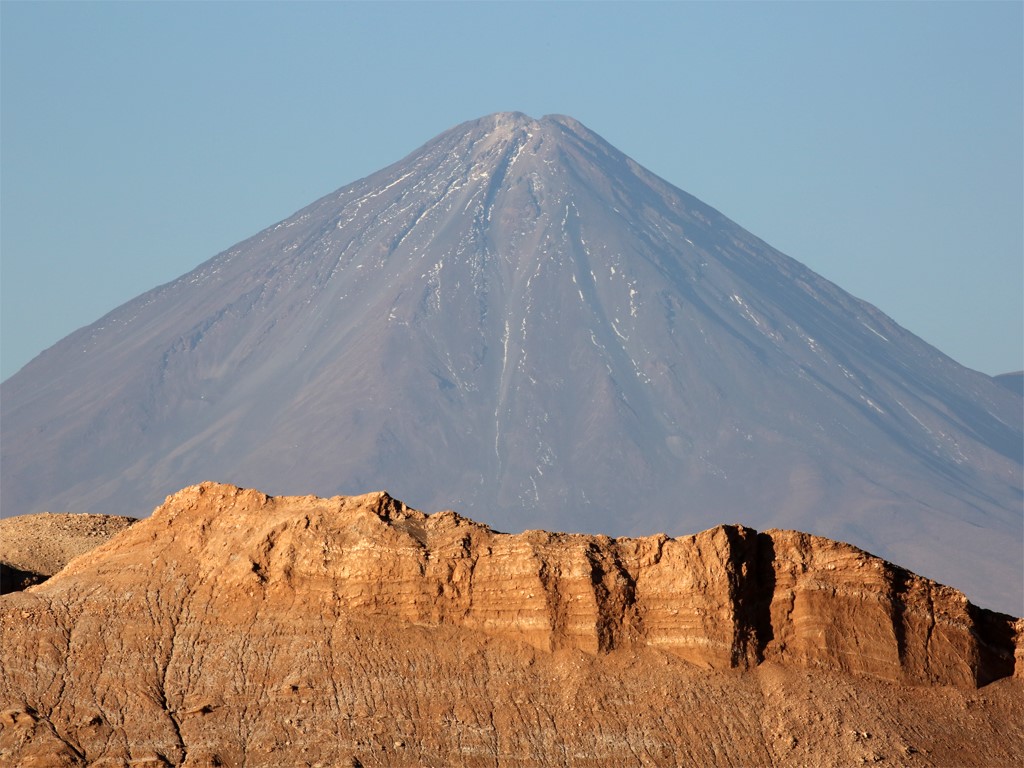
Moon Valley in Chile
Starting from San Pedro de Atacama, you’ll explore the Cordillera del Sal, impressive geological formations and multicolored sediments. The origin of the Cordillera del Sal is synchronous with the origin of the Salar de Atacama, consequently the composition of its rocks is mainly salts and associated clays, developing an extremely special and suggestive landscape, giving rise to the mystical Moon Valley.
Exploratory hike through interior valleys, enjoying abandoned salt caves and mines, winding dunes and especially we’ll enjoy the sunset in the Moon Valley, which is nature’s invitation to inner silence and the astonishment that Creation produces. You’ll observe these beautiful rock formations during a short trek.
Then, one of the most impressive and most anticipated moments is the sunset and its fantastic show of changing and magical colors, revealing an absolutely marvelous landscape: the most suitable place to appreciate it’s located in the “Cordillera de la Sal”, in the Moon and Mars Valleys; the latter two are rock formations sculpted by the winds, taking on bizarre and unreal shapes reminding everyone of a lunar landscape… Silent and mystical!
The highest geysers in the world
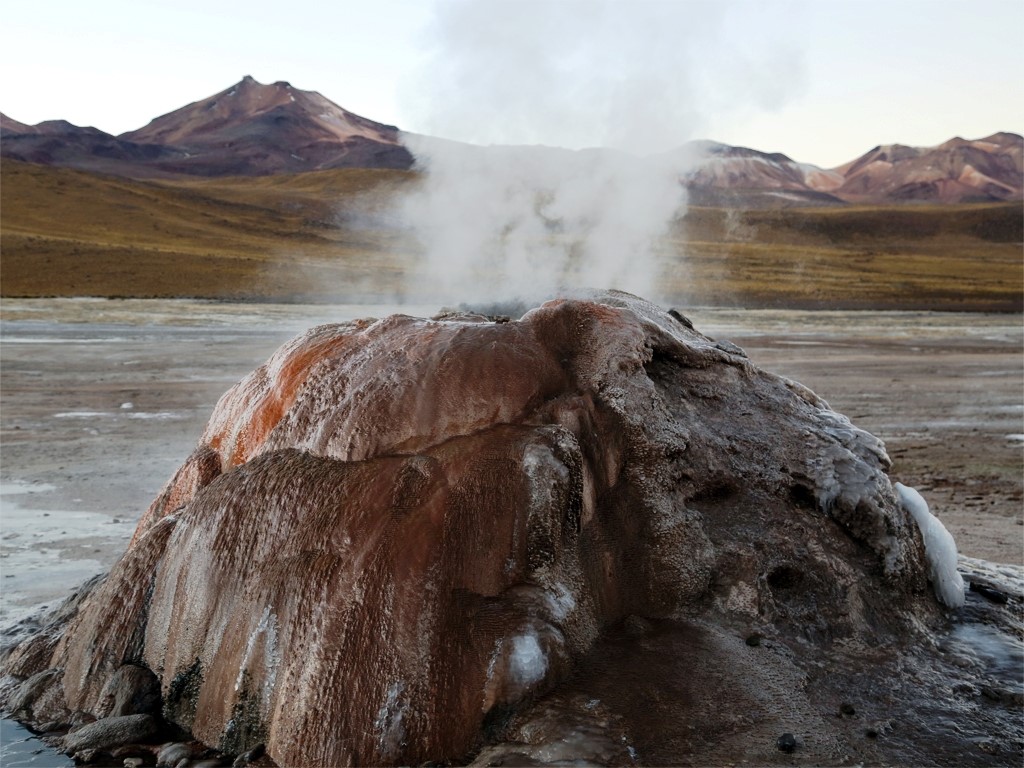
Tatio Geysers in Chile
Departure around 5:30 a.m. from San Pedro de Atacama, for the Tatio geysers, located 85 km from San Pedro de Atacama and at 4,200 meters above sea level, these are the highest geysers in the world. This impressive volcanic site owes its origin to the water from melting snow infiltrating into the rocks and crevices of the ground until it meets the magma at depth, as a result, this water violently transforms into steam and rises to the surface forming superb and impressive geysers (some 50 m high!) as well as a spooky misty landscape.
In winter, temperatures can reach -19° early in the morning!! You’ll witness this incredible spectacle of nature and these geysers where the water is around 85 degrees. (don’t fall into the craters, there have already been 4 deaths). We have breakfast there, in the middle of this unreal and fantastic scenery. On the way back, we’ll be able to appreciate the wild beauty of nature, the Andean peaks of more than 5,500 meters above sea level and the fauna (mainly vicuñas…).
There are few places on earth where geothermal energy is perceptible to humans. The very particular geological conditions of the Tujle mountain (Cerro Tujle), added to the volcanic activity of the sector, have produced the geological conditions favorable for the emergence of the Tatio geysers. The exploration is guided, observing steam fumaroles, incandescent mud craters, boiling water pools (86°) and geysers. Then drive to the Puritama resorts, a heavenly place with these 7 natural swimming pools where the water is at 30°. A surprise awaits you there.
Visit to the Triassic Ischigualasto Park
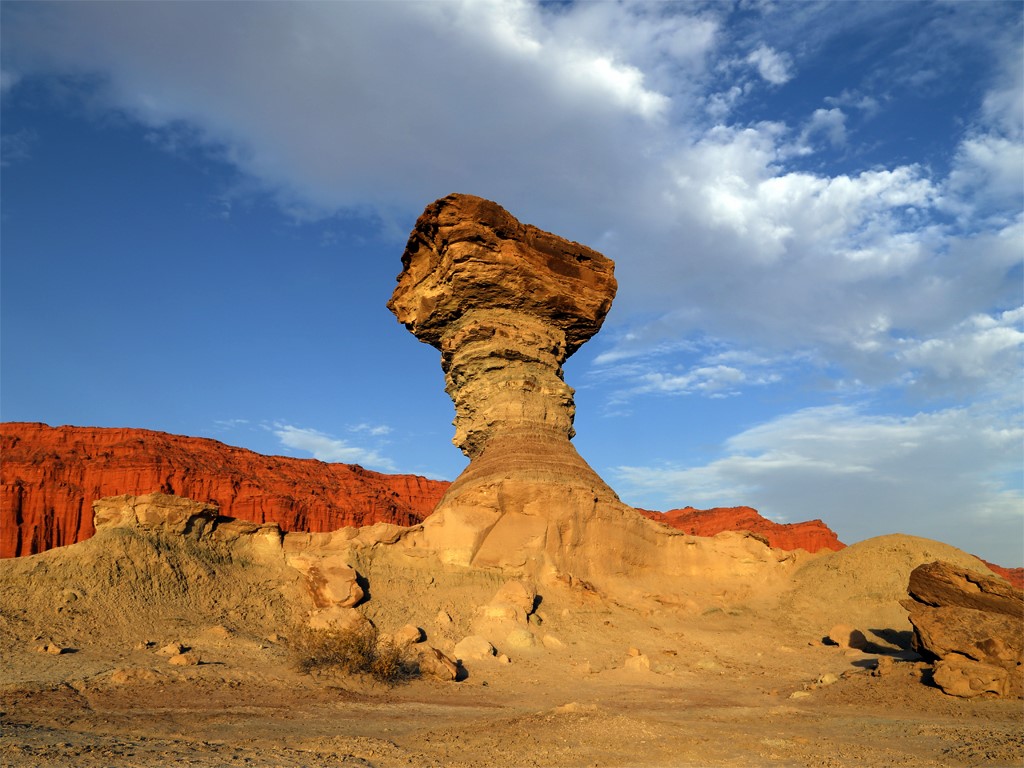
Moon Valley in San Juan
Departing from Villa Unión, in the province of La Rioja, or from San Juan, in the province of the same name, a day full of emotions awaits us during the visit to the Ischigualasto Provincial Park. It was created in 1971 and was elected UNESCO Natural Heritage on November 29, 2000. Ischigualasto is a name of Quechua origin, which means “place where the moon rests”.
It’s also the only place in the world where the 3 phases of the Triassic era are grouped together, which is a subdivision of the Mesozoic era, between -251 and -199.6 million years ago. More than a dozen complete dinosaur skeletons have been found there and it’s a very high place in world archaeology. Not to be missed…
It’s possible to visit the Talampaya National Park the next day (see the following tour), because the two parks are close.
Visit to Talampaya National Park
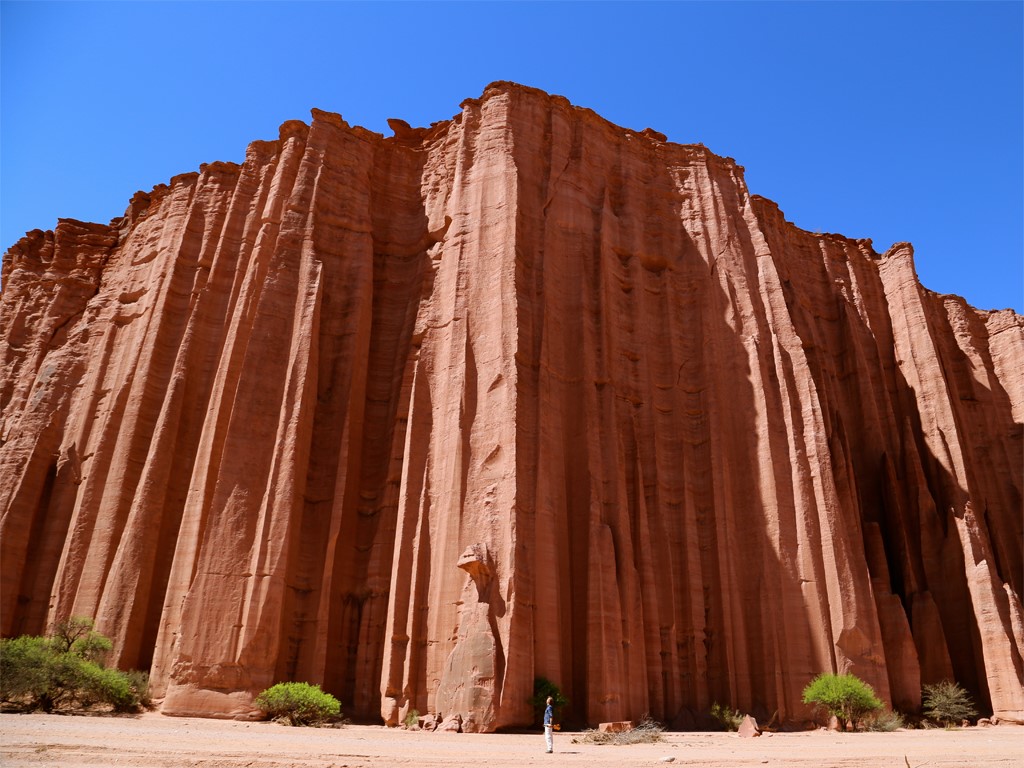
Talampaya National Park
Also departing from Villa Unión or San Juan, to visit the Talampaya National Park in the province of La Rioja, still in the Cuyo region. The structure of the landscape is the result of tectonic movements, which caused the uplift of large rock masses.
For millennia, these rocks have been subject to erosion by water and wind, as occurs in a desert climate with large thermal amplitudes, very high heat during the day and very cold at night, with some torrential rain in summer and very strong winds in spring. The average altitude of the park is approximately 1,300 meters, and the climate is continental. Elected a UNESCO Cultural and Natural Heritage of Humanity since 2000.
It’s possible to visit the Triassic Ischigualasto Park the next day (see the previous tour), because the two parks are close.
Inca Bridge Tour
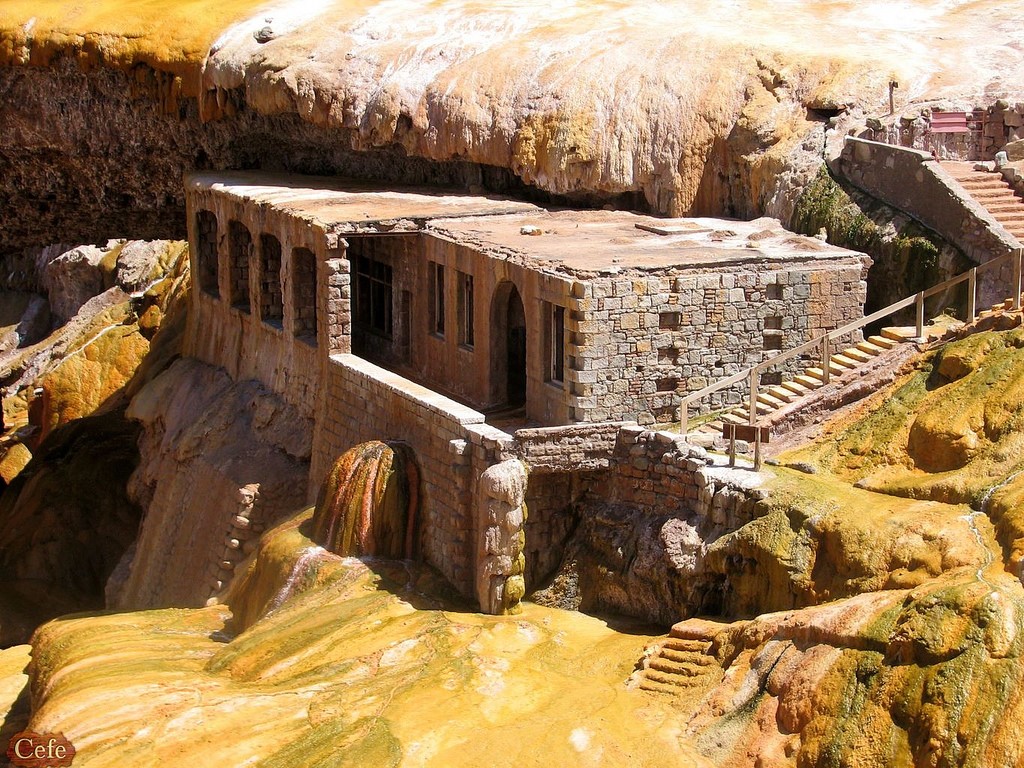
Inca Bridge in Mendoza
A truly very special excursion, with spectacular landscapes. From Mendoza we head towards the majestic Andes Cordillera, passing through Potrerillos. Along the Río Mendoza, we follow the road that leads to the heart of the Andes. We pass through the Uspallata valley with its mountains of countless colors.
After Uspallata village, the landscapes are absolutely beautiful: you can discover the Los Penitentes ski resort and then admire the Inca Bridge “Puente del Inca”, a geological marvel where the river has sculpted a salt bridge natural. Then, at the end of a short walk, you can contemplate Aconcagua, the highest peak in the Americas, 6,959 m high. On the way back, we have lunch with a gourmet picnic; the location is defined at the time, based on the best view of the mountains.
On the Road to Darwin

Charles Darwin’s footsteps in Argentine Patagonia
I invite you to follow in Charles Darwin‘ “footsteps”, who noted in his logbook, on December 23, 1833, upon seeing these landscapes of Patagonia: “I do not think I have ever seen, a place more isolated from the rest of the world, than this crevasse of rocks in the middle of the immense plain”.
Excursion departing from Puerto Deseado, on the “Deseado” river, for groups of only 6 people. We navigate this river at high tide for 42 km, where we face a landscape of impressive proportions. You can observe many cormorants there, including the “gray” cormorant (largest colony in Patagonia), numerous wolves and sea lions, dolphins, guanacos…
At the end of these 42 km, we begin a trek to arrive at the very place where Charles Darwin exclaimed at the beauty of such a landscape, and from where Conrad Martens, official English painter who accompanied Charles Darwin during the expedition, drew these landscapes.
The other option is to connect this viewpoint, by land, passing through the “La Aurora” estancia, a 70 km route from the town. In this option, the very friendly Jorge will guide you. It’s, in itself, a real Patagonian History book!! Arrival at the Darwin viewpoint, where the view of the Deseado River canyon is dizzying. The trek lasts 1 hour in total, to reach the banks of the river. The spectacle is striking, words cannot describe these landscapes.
 English
English Español
Español Français
Français

